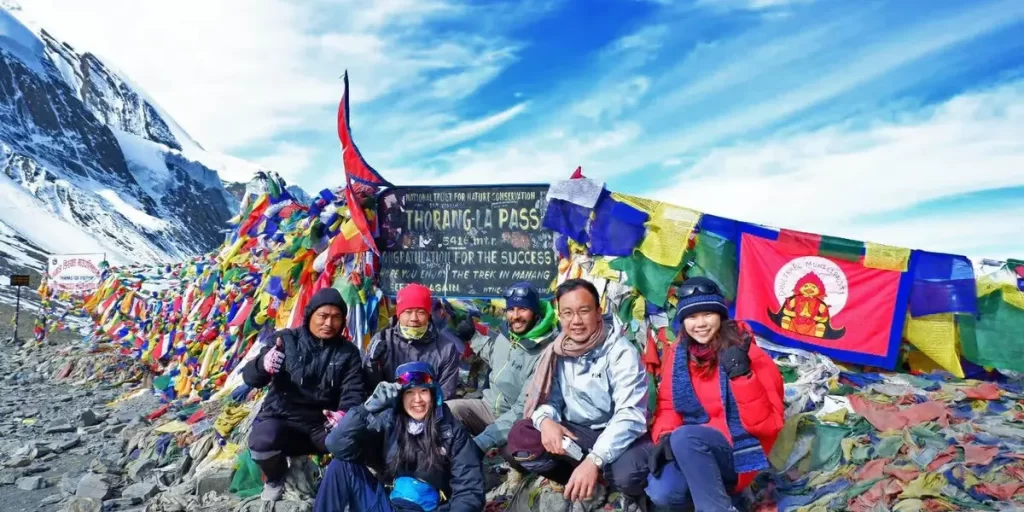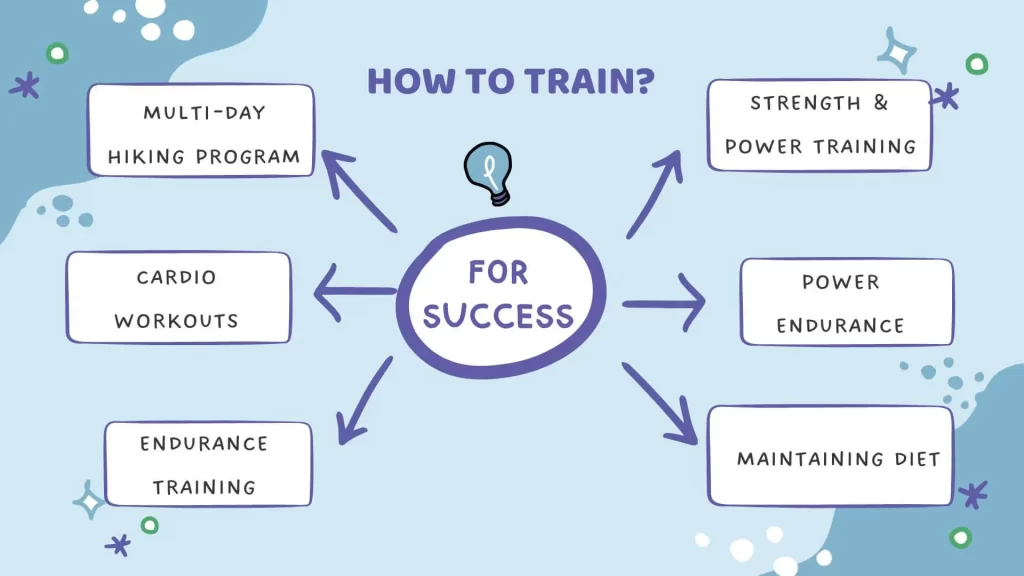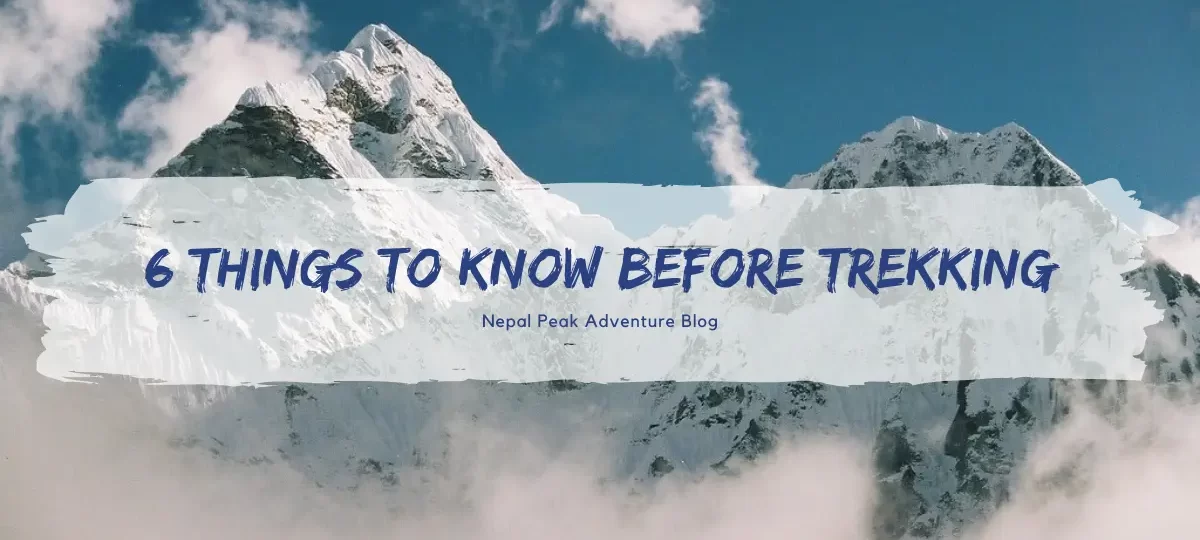6 Things To Know Before Trekking in 2024
“6 things to know before trekking” comes from my own experience while I was a porter, guide, and tour operator. A decade ago when I was a porter myself, I never thought that I will be a professional guide and in this position to operate a trekking agency. It was a tough time but I still managed to take hundreds of guests to the base camps or higher elevations.
During those days, I saw lots of people fail on their journey as well as my guests too. As time goes by, lots of things have evolved from workout plans to gears you can use to make your trek less hard. Similarly, the accommodations available in the trekking area have changed a lot as I could remember. So, 2024 can offer you lots of things, services, and plans for you. Before that, here are the 6 things to know before trekking in 2024:
1: Choose Trekking Routes Wisely

Trekking or you could say hard-core adventuring is a passion that many peoples love to do once in a lifetime. To do this kind of adventure, people search for challenges, natural scenery, and locations. In my opinion, Nepal is one of the best places to do this kind of adventure as it provides all types of trekking routes.
You can either choose a short trekking route or a long trekking route to spend your time with nature. The short trekking route consists of a minimum of 10-12 Days itinerary and is best for beginners. Consisting of more than 12 days itinerary can be hard for beginners as it takes more time to complete and the possibility of success is half. I recommend that you choose trekking routes wisely.
Here are some of the trekking routes that are best for beginners who haven’t done trekking activities and want to start trekking. It is not necessary to start your first trekking adventure in Nepal. However, why not start your first trek in Nepal?
Short Trekking Trails for Beginners:
- Poon Hill Trek: Poon hill trek is one of the short treks in Nepal which is popular for its sunrise views above the mountains. This trek offers astounding views of Annapurna Massif, including Hiunchuli, Gangapurna, Annapurna South, and Fishtail (Macchapucchre). Usually, the Poon hill trek is done during leisure time and takes a minimum of 7-9 days to complete. In this trek, the highest altitude you will achieve is 3,120m. You will experience Gurung culture as well as cuisines, and witness some villages of Ghandruk & Ghorepani during the trek.
- Mardi Himal Trek: A short and relatively easy trek that lies in the Annapurna Region of Nepal. Mardi Himal takes you to its base camp which is 4,500m that offers the view of Mardi Himal, Fishtail, & Annapurna South. It takes 8-10 days to complete this trek.
- Tsum Valley Trek: Located in the Manaslu Region of Nepal, it is one of the well-known off-the-beaten-path treks that will take you to remote villages & ancient monasteries. This trek is long and will take 15-18 days to complete however the highest altitude you will gain is 3,700m. You will have enough time to experience the local culture, meet friendly Tsumbas, & taste new cuisine along the way.
- Annapurna Base Camp Trek: This trek is very popular for solo trekkers and crowded during peak seasons. The highest elevation you will gain during this trek is just 4,130m and takes less than 10 days to complete. Due to the newly made roads, the adventure to ABC is a little off. However, during the off-season, you can trek to this place for a better experience.
- Pikey Peak Trek: The best alternative trek to Everest Base Camp Trek is Pikey Peak Trek. This trek is just less than 8 days and offers stunning views of Mount Everest, Nuptse, Makalu, Lhotse & other peaks. Along the way, you will have a chance to experience Sherpa Culture. And the highest elevation you will gain on this trek is 4,065m.
There are the famous & trending treks that are best for beginners in 2024. There are other treks too which are beginner-friendly such as Lower-Mustang Trek, Gosainkunda Trek, Tamang Heritage Trail, and more.
2: Learn the Basics of Trekking

Basics are the most important things you should not miss out on. In terms of trekking, here are some of the important basic things you should learn before trekking in 2024.
- Learn the basics of Safety: As a trekker, you may counter some potential hazards of trekking like altitude sickness, sunburn, slippery terrain, wildlife, hypothermia, falls, and many more. You should understand how to mitigate them, stay alert, and listen to your guide. One of the most common problems found during the trek is altitude sickness. To prevent it, you should not miss acclimatization day and walk slowly. To prevent hypothermia, you should dress properly following the packing list guide. To avoid falls/accidents, be mindful of your footing & properly use trekking poles. Like this, there are other safety procedures that you should follow. You can ask us anytime if you got questions.
- Use of Navigations: Most trekking companies will handle you a map in your hand however you will also have a guide with you. So, using a map is not necessary most of the time. But if you are a solo trekker then it is highly recommended to learn how to use a map and compass.
- Using First Aid: You should know how to use a med/First Aid box. There are lots of procedures, guides, and videos online about applying for a first aid kit during travel. Similarly, you should carry a small first ad box to yourself too which can come in handy when needed.
- Leave No Trace: It is important to appreciate Mother Nature by following the “Leave No Trace” method to minimize the impact on the environment.
- Stay Hydrated: Staying hydrated is very important when trekking to higher elevations. However, extreme coldness can make it hard to drink water from time to time. So, the best way to stay hydrated is to use a hydration salt in your water, drink enough fluid in tea houses, carrying hot water on the trail.
3: Get your Travel & Medical Insurance:
Travel & Medical Insurance is still important in 2024 before stepping on the trekking trail. However, you should know that there is special insurance that is needed for trekkers who are trekking to 3,00m-5,000m altitude. And that is covering the insurance up to 6,000m altitude with helicopter evacuation.
Along with those terms, your travel insurance will also cover other unexpected losses/expenses, such as lost luggage, flight cancellations, medical bills, and other related incidents.
Similarly, it is always a good idea to carry a copy of your insurance policy with you while trekking along with other necessary documents like passports. Companies like World Nomads also provide these kinds of insurance. You can find similar companies in your own country too.
Note*- Nepal does not issue trekking insurance.
4: Know How to Pack Smart in 2024
Before packing your gear or clothing, you should be familiar with the weather & terrain you will be trekking through, as well as the itinerary of the trek. The packing list & techniques have been updated annually. Similarly, the accommodation in some of the trekking trails has been upgraded and provides a nice & cozy bed. However, it is still a good idea that you pack warm clothes for the trek.
Here is the trekking preparation for 2024:
- Bring Layers: When trekking, it is important to pack clothing according to layers, so that you can adjust your clothing suit to the weather & temperature. Usually, it is categorized into 3 layers; Base Layer, Mid Layer & Outer Layer.
Base Layers are mostly moisture-wicking fabric such as synthetic materials to keep you dry. Mid Layers consist of insulating materials such as fleece or down to keep your body warm.
Outer Layers include waterproof & windproof materials to protect you from coldness. - Pack Light: Overpacking is a common mistake mostly seen among beginners. It is recommended to pack only the necessary gear for the trek. I have seen people carrying 2 kg of cosmetic products only during the trek, and electronics that are not useful on the treks. When packing gear & clothing, it is recommended to take advice from professionals. Similarly, remember that porters are allowed to carry 20kg & trekkers can carry only the necessary items that are used frequently.
- Always make an extra space: When you start packing, keep in mind that you need to make an extra space for souvenirs. This will trigger your mind on packing gears efficiently. Also, you can rent some gear in Thamel, Kathmandu which can save space in your backpack.
5: Train Smart Not Hard

There is a huge difference between training smart & training hard for trekking. Having a big muscle is not necessary for trekking. It is important to train your body in a way that is specific to the demands of the trek. So, what are the things that you should focus on while training so that you will be able to walk 5-6 hours per day?
- Build Endurance: Endurance is a must while trekking as it helps you to keep pushing forward while trekking. The most effective way to build endurance is by hiking, cycling, swimming, resistance training & interval training.
- Strengthen your Leg: As you will be walking a lot on the trail, you should have a strong leg. Start your leg day and keep doing squats, Lunges, Step-ups, Glute bridges, and Calf raises to strengthen your leg. Similarly, it also helps to improve your stamina.
- Train with your Backpack: If you are not used to carrying a backpack then you should start now. When trekking, you will be carrying your essentials with you which can weigh 5 kg. Therefore, you need to get familiar with carrying your backpack.
- Flexibility & Balance Training: An uneven terrain, rocky trails, and ups & downs will come across you many times. This kind of activity can injure your muscle tissue unexpectedly. To prevent this kind of accident, you need to practice your balance through activities like Yoga, Warm-ups, or Tai Chi.
- Listen to your body: Another common mistake that people do is pushing themselves too hard. If you plan your schedule timely then you can have enough time to train your body. Be sure to take adequate rest & recovery during training sessions.
6: Make Your Decision Wisely
It’s only about you and your life when you decide to start trekking. Listen to your body and mind instead of others who claim to be professional trekkers. Believe me, no one is more professional than Sherpa who lives in the mountain, and guides who have walked the trail more than a hundred times. It’s their home and they can even walk on rainy days, snowy days, or foggy trails.
Sometimes, people will tell you that they completed the trek solo and influence others to do the same. However, as a guide who has witnessed even worse days, I suggest remembering these questions.
Will they take responsibility for your life?
Are you the same person as them?
Is this your first trek?
Did you witness them succeeding in their trek with ease?
It’s important to listen to others however it is not necessary to do the same. If you have trekked Everest Base Camp 5 times in a row then yes you may able to do solo. Still, it will be a 50/50 chance. Besides, if you are just starting your trek and attempting a 5,000m altitude trek then you will only risk yourself. So, make your decision wisely when planning to trek in Nepal. Choose a travel agency wisely and choose your partner wisely.
Similarly, again remember that no one can give you a 100% guarantee. Trekking agencies only help in increasing the possibility of your success.
With this our “6 things to know before trekking in 2024” is complete. If you have any questions remaining then feel free to ask. We will be adding more information in the coming days. Till then, stay healthy, and stay safe.



